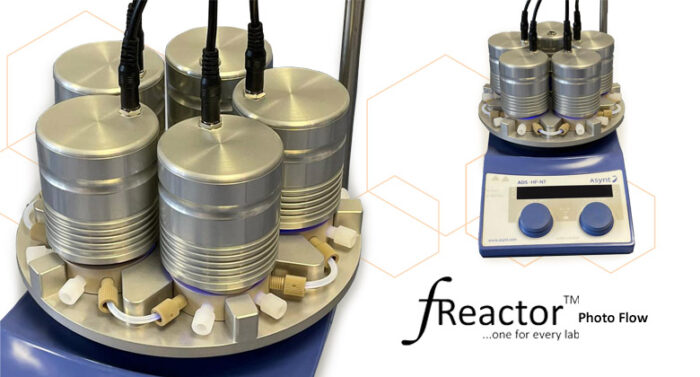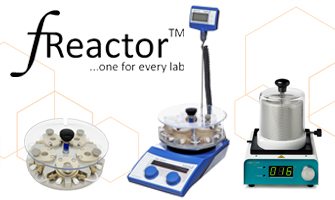Flow chemistry swaps flasks for fluidics: replacing the tools of conventional “batch” processing with flow chemistry equipment that handles continuous streams of reactants and products. Carrying out a lab-scale synthesis continuously (or “in flow”) can offer numerous advantages. Increased availability of cost-effective flow chemistry equipment means flow chemistry is becoming an increasingly attractive proposition for many labs.
In this article, we’re looking at the fundamental pieces of flow chemistry equipment that constitute a “flow” setup.
What is Flow Chemistry?
Flow chemistry is where chemical reactions are carried out in a continuous stream rather than in discrete batches. In flow chemistry, substances are conveyed and mixed in fluidic channels. While flow methods have been long established in industry, the term “flow chemistry” has only been coined relatively and describes the use of small-scale continuous chemistry methods in the lab, generally using flow chemistry equipment that relies on microfluidics.1
Flow chemistry equipment can offer numerous benefits – especially for reactions that are dangerous using batch methods, involve heterogeneous catalysts, and are particularly fast, sped up by heating, or photochemically/electrochemically driven.2 For example, flow chemistry equipment offers efficient mixing in multiphasic systems, enhanced temperature control, and alignment with “green chemistry” principles of material efficiency and safety.3
Flow Chemistry Equipment
Flow chemistry equipment is typically modular, and flow processes can be broken down into eight basic “zones”: reagent delivery, mixing, reactor, quenching, pressure regulation and collection.
The first piece of flow chemistry equipment is typically a pump used to feed substances into the flow system in the fluid and reagent delivery zone. Next, these feeds are combined by a dedicated mixing device before entering a reactor module, the piece of flow chemistry equipment where the chemical reaction occurs. The reactor module is connected directly to a quenching device which stops the reaction, enabling precise control of residence and reaction time. High pressures are particularly easy to achieve in flow systems. A pressure regulator carries out this task; an essential flow chemistry equipment usually positioned immediately before the collection zone for the final product.
A flow setup may feature additional flow chemistry equipment such as analysis and/or purification modules.
Asynt provides a full range of flow chemistry equipment, from small-scale benchtop modular platforms through to more advanced systems for multi-step syntheses and automated reaction sequences.
Alongside our standalone flow chemistry equipment, we offer several complete flow chemistry kits based on our unique modular fReactor platform. The fReactor platform is designed to be intuitive and flexible, incorporating a range of flow reactors and photochemical add-ons capable of operating with both single phase and multiphasic systems. Our goal with fReactorwas to develop a platform which lowers the entry barrier to Flow Chemistry and supports the development of materials and synthesis routes. It is a powerhouse system that can be integrated with the fReactor PhotoFLOW module to help scientists readily expand their Flow Chemistry work to include photochemistry. The fReactor is also available in various capacities to suit individual flow chemistry needs, plus alternative build materials to enhance chemical resistance against specific reaction media.
To find out more about our range of standalone flow chemistry equipment and complete kits you can view these HERE on the Asynt website. Alternatively get in touch with a member of the Asynt team today – either by using the LIVE CHAT box at the bottom right of your screen, or by emailing us via [email protected].
References and Further Reading
- Chemistry in flow systems II. https://www.beilstein-journals.org/bjoc/series/17.
- Plutschack, M. B., Pieber, B., Gilmore, K. & Seeberger, P. H. The Hitchhiker’s Guide to Flow Chemistry. Chem. Rev. 117, 11796–11893 (2017).
- Rogers, L. & F. Jensen, K. Continuous manufacturing – the Green Chemistry promise? Green Chemistry 21, 3481–3498 (2019).











